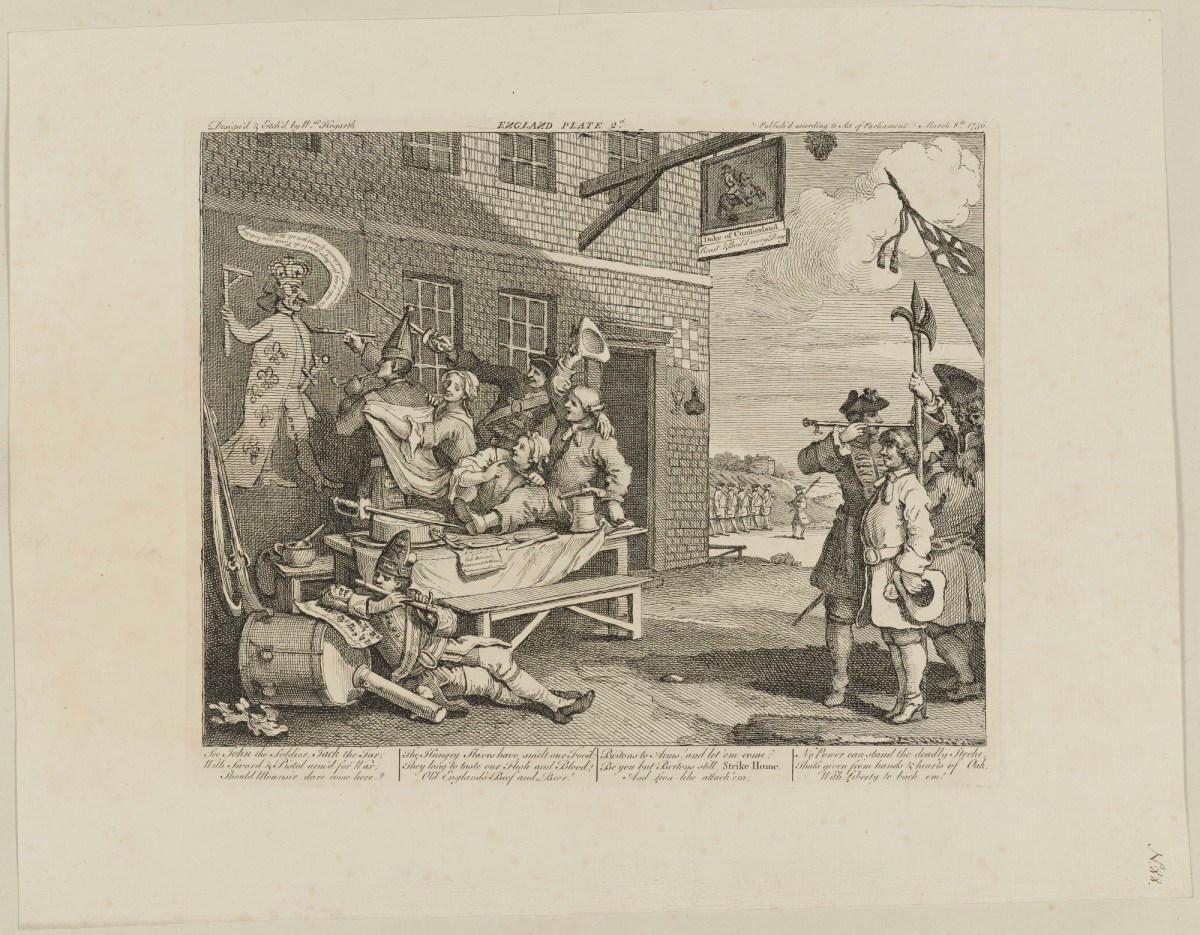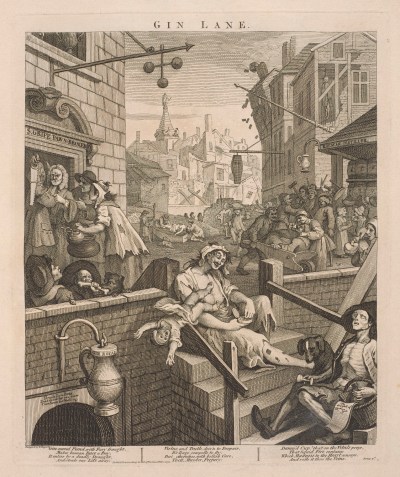
William Hogarth, The Invasion, plate 2: England, 1756.
290 mm x 375 mm. © Photo: Royal Academy of Arts, London. Photographer: Prudence Cuming Associates Limited.
This image is not available to download. To licence this image for commercial purposes, contact our Picture Library at picturelibrary@royalacademy.org.uk
The Invasion, plate 2: England, 1756
William Hogarth (1697 - 1764)
RA Collection: Art
The outbreak of the Seven Years' War in 1756, and the large movements of French troops to Le Havre and Brest raised fears of a French invasion. In response to this prospect William Hogarth etched a pair of plates on this topic, The Invasion. This second plate shows British troops, some of whom are performing drills in the background while others are sat outside an inn. The inn is named 'Duke of Cumberland', a reference to the last time the French (backing Prince Charles Edward Stuart) attempted to invade England and were defeated at Culloden. A grendadier is painting a caricature of the king of France on a wall, much to the amusement of his companions. The scene suggests that the British army is both disciplined enough to repel any invasion (as shown by the soldiers in the background) but also that their morale is high and that they are not perturbed by the possible challenge ahead. In this Hogarth's print is 'the antithesis of the voluble pessimism and defeatism' conveyed by other prints on the same subject, as M. Dorothy George has noted.
The pair (17/3936) depicts a malnourished and disorganised French army, and prominently features a monk wielding an array of torture implements (reflecting widespread fears of popery). It has much in common with Hogarth's earlier anti-French satire The Gate of Calais (17/3546).
Object details
290 mm x 375 mm
Hogarth's prints. Vol. I. - [s.l.]: [n.d.]
Associated works of art
1 results
Start exploring the RA Collection
- Explore art works, paint-smeared palettes, scribbled letters and more...
- Artists and architects have run the RA for 250 years.
Our Collection is a record of them.




